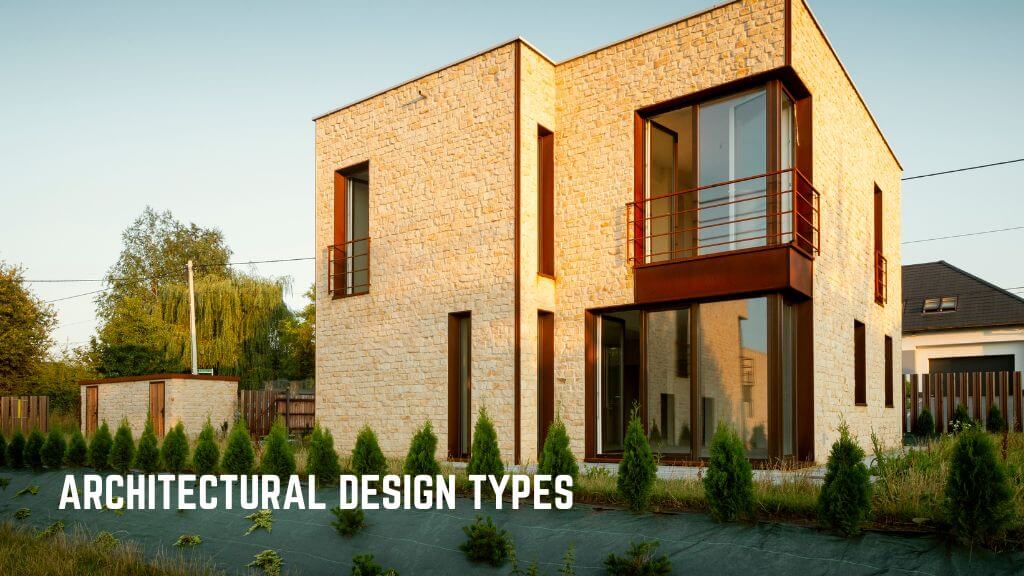Architects can create architectural designs in many different ways. You can have an architect who is classically trained, or you can have an architect who is trained in a postmodern style. The two styles are very different, but they are both designed to make your house look good.
Classical architecture

During the Italian Renaissance, classical architectural design flourished. Today, classical design can be found in many traditional city buildings, as well as in private residences.
Classical architecture emphasizes symmetry and harmonious proportions, which are mathematically perfect. It also features clean lines and use of durable materials. Its architectural vocabulary includes columns, pediments, and window configurations. It uses the basic vocabulary of decorative elements, such as dentil moldings and ornamentation of door surrounds.
One of the most well-known Classical architecture elements is the column. Classical columns are categorized into Ionic, Doric, and Tuscan orders. The Ionic order features taller, narrower columns. They have ornately decorated capitals. The Doric order is less elaborate. They feature a column with no capital.
The most important feature of Classical architecture is proportion. The proportions of a column are derived from the block layout of the principal components. The proportions are then applied within a composition.
The Vignola method is used to draw classical orders. The method starts with the block layout of the principal components, followed by the details of the elements.
Another important feature of classical architecture is its use of a scale. The Architects Scale consists of 1/8″, 1/4″, 3/4″, 1 1/2″, and 3″ scales. These scales are used to develop the physical dimensions of a building.
The Ionic order features a circular base and volutes on the top of each column. The Composite order is a combination of Ionic and Corinthian elements. The Tuscan order is quite simple. The Doric order is asymmetrical with no base and little decoration on the column.
These are just a few of the classical architectural design features that students will learn during the ICAA Summer Studio in Classical Architecture. This four-week immersion program is designed to introduce students to classical design. It emphasizes drawing and proportion, which help students make connections between theory and design. It includes an intensive observational drawing course, field study, and visits to the offices of leading classical designers.
Modernist architecture

During the late 19th century, modernism as an architectural style emerged in Europe. It was then introduced to the United States, where it became popular and spread throughout the country.
The Bauhaus architectural style featured large buildings, clean lines, and blank walls. It is also known for its use of steel frames and flat roofs.
Modernism in architecture emphasizes form over ornament, as well as the use of new materials to build buildings. It ushered in a new world order of pragmatism and austerity. It was also known for its use of new construction techniques, which allowed buildings to be larger and thinner than ever before.
Modernist architecture was also accompanied by a variety of unique styles. These include the International Style, the Bauhaus style, and the Modernisme movement. The Bauhaus style features clean lines, flat roofs, free standing columns, and primary colours.
The Bauhaus architecture style is also known for its use of glass curtain walls. Its flat roofs are also prone to leakage.
Another highly personified architectural design is Art deco. It became popular during the 1920s and 1930s. These buildings have rounded arches, floral styles, and cable mouldings around the doors. The style is still popular today for its majestic features.
Modernist architectural design also emphasizes the use of natural light. It incorporates large glass surfaces to bring natural light into the building. It also features an open floor plan. It can be used for both residential and commercial buildings.
Modernist architectural design is also associated with a lack of coherence. It can also be expensive to maintain, and it is often difficult to see from the street. Some modernist houses feature trees and plantings at the front, while others have no backyard or front lawn.
Bauhaus school

Founded in 1919 by German architect Walter Gropius, the Bauhaus school of architectural design is considered to be one of the most influential design movements of the twentieth century. Its teaching philosophy was to combine aesthetics with function. The school offered students a combination of craft courses and fine arts subjects. The school was later relocated to Berlin and Dessau.
In 1922, Wassily Kandinsky began teaching at the Bauhaus. During his time at the school, he explored the use of light to create abstract shapes and elements. He also used photography to study optical illusions and distortion. He eventually emigrated to the United States in 1937. He continued to contribute to art education in America.
Josef and Anni Albers were the most famous couple of the Bauhaus. They were appointed to the school’s teaching staff in 1923 before they completed their courses. They were also responsible for exploring geometry and color. They also explored the frame. In 1928, they made glass pictures.
The Bauhaus also produced furniture and textiles. The school advertised their products through books and exhibitions. They were also responsible for designing over 4,000 Bauhaus buildings in Tel Aviv, Israel. In the years that followed, the Bauhaus style began to spread throughout the Middle East.
Bauhaus instruction was inspired by the geometric, futurist, and expressionist styles of the early twentieth century. It aimed to create an artistic community that was based on public good rather than private luxury. It also stressed the importance of mass production.
The school also taught metal working, weaving, and pottery. It offered students free painting classes. They also developed typography workshops. The school also taught color theory and design principles.
Victorian style

Whether it’s a stately castle or a humble bungalow, Victorian style architecture is the way to go when you’re looking to add a bit of Old World grandeur to your property. The most obvious reason is that the buildings of the Victorian era were more often than not sported a wealth of decorative wood features. The Victorians were also known for their attention to detail.
A few of the more prominent features of Victorian style architecture include the aforementioned mill work. These elaborate pieces were intended to fill in the gaps between the columns and roof, and to enhance the overall look of the structure. These features may be the most obvious, but are hardly the only decorative touches to be found.
Another novelty is the aforementioned ominos mso o. The aforementioned triumvirate of ominous features are augmented by the more mundane ones such as decorative brackets, which are usually the smallest of the lot. They may be plain metal bars bent at an angle, but their presence is more than just a visual treat. Decorative brackets also may be chosen for their other less obvious features such as their decorative molding, which adds to the overall visual appeal of the structure.
Post-Modernist

During the 1950s and 1960s, a new architectural style called Post-Modernist Architectural Design emerged. Its development has had a huge impact on modern architectural design. It is a style which uses the compositional reaction to formalism in architecture and design.
Post-Modernist architectural design can be found in buildings such as the Sony Building by Philip Johnson, the Walt Disney Concert Hall by Frank Gehry, and the Seagram Building by Mies Van Der Rohe. Some of these buildings have circular cutouts and a pediment structure. Others are designed with a sharp design. Some of these designs were classified as ‘Deconstructive Architecture’, as well.
There are many kinds of literature written about Post-Modernist Architectural Design. Some writers have a positive approach towards the movement and others are negative. Some of these writers include: Charles Jencks, Jonathan Arac, Julia Kristeva, and Meaghan Morris.
Aside from influencing modern architecture design, Post-Modernist Architectural Design has also been cited by many scholars around the world. It has also been influenced by symbolism. For example, in the case of the Sony Building, the circular cutout refers to Tomas’s furniture design. Another example is the Wells Fargo Center, a twin-tower high-rise complex. These towers are joined by a three-story glass atrium. The towers have won the BOMA Building of the Year award twice.
Post-Modernist Architectural Design is a style which is influenced by many other styles, such as Deconstructionist Architectural Design and International Style. It has been influential in modern architectural design and is still influencing the design of future buildings. Architects such as Zaha Hadid and Michael Graves have also been recognized as postmodern designers. Several buildings by Zaha Hadid have also been classified as Deconstructivist Architecture.
You can follow more articles:
Louvre Pyramid Architect: Understanding The History Of Design Behind



